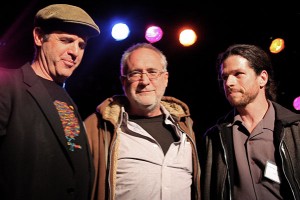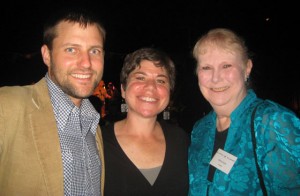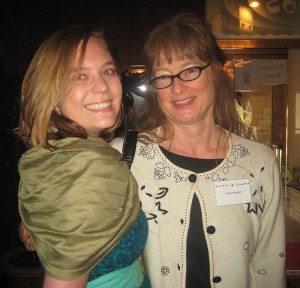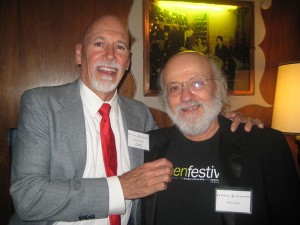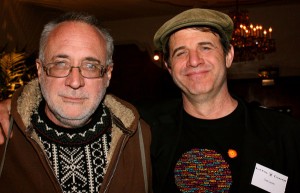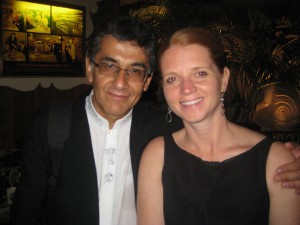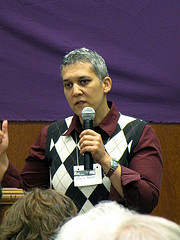“I refuse to accept the idea that man is mere flotsam and jetsam in the river of life, unable to influence the unfolding events which surround him,” said Dr. Martin Luther King as he accepted the Nobel Peace Prize in 1964. These words will guide me and other passengers aboard the Gaza Freedom Flotilla, a fleet of nine boats scheduled to set sail for Gaza on June 25 from various Mediterranean ports. While the Israelis try to label us provocateurs, terrorists and Hamas supporters, we are simply nonviolent advocates following the teachings of Dr. King. We refuse to sit at the docks of history and watch the people of Gaza suffer.
The U.S. boat, which will carry 50 Americans, is called The Audacity of Hope. It is named after Obama’s bestselling political autobiography in which he lauds our collective audacity of striving to become a better nation. But I prefer to think of our boat as part of Dr. King’s legacy. He, too, talked about audacity, about his audacious faith in the future. “I refuse to accept the idea that the ‘isness’ of man’s present nature makes him morally incapable of reaching up for the eternal ‘oughtness’ that forever confronts him,” Dr. King said.
Our intrepid group has its moral compass aimed at the way things ought to be. Our cargo is not humanitarian aid, as some of the other ships are carrying, but thousands of letters from the U.S. people, letters of compassion, solidarity and hope written to people living in the Gaza Strip. We travel with what Dr. King called “unarmed truth and unconditional love.”
We focus on Gaza because since 2007 the Israeli government has enforced a crippling blockade on its 1.5 million residents. Inflicting collective punishment on civilians is morally wrong and is a gross violation of international humanitarian law under Article 33 of the Fourth Geneva Convention. Yet the world’s democracies do nothing to stop Israel’s extraordinarily cruel behavior, and in fact did nothing for 22 days in 2009 while the Israel military unleashed a tidal wave of carnage that left 1,400 Palestinians dead. They continue to sit by while the people of Gaza remain isolated and unable to secure access to building materials and basic living supplies, and while Israeli soldiers shoot at Gaza’s farmers trying to till their land along the border and attack fisherman trying to make a living in waters off their shore. And in the case of the United States, our government is not simply sitting by, but supporting the Israeli military with $3 billion in military aid a year.
The Palestinians’ plea for help has been ignored by world governments, but it has pricked the conscience of civil society. Caravans have crisscrossed Europe and Africa, carrying tons of aid. Boats have braved Israeli war ships and tried to dock in Gaza’s ports. Over 1,000 people joined the Gaza Freedom March, an attempt to break the siege that was brutally stopped by Egyptian police during the rule of Hosni Mubarak.
In May, 2010, seven ships and nearly 700 passengers carrying humanitarian aid tried to breach Israel’s naval blockade. The Israeli military violently intercepted the ships, killing nine passengers aboard the Turkish boat, including a 19-year-old American citizen. The rest of passengers were roughed up, arrested, thrown in Israeli prisons, and deported.
For a brief moment, this tragedy in international waters focused the world spotlight on Gaza. Israel said it would ease the draconian siege, allowing more goods to enter the beleaguered strip. But just this month, the health authorities in Gaza proclaimed a state of emergency due to an acute shortage of vital medicines and also this month, a report from the UN Agency for Palestinian Refugees, UNRWA, found unemployment in Gaza at a staggering 45.2 percent, among the highest in the world. UNRWA spokesman Chris Gunness said the number of abject poor living on just over one dollar a day has tripled to 300,000 since the blockade was imposed in 2007. “It is hard to understand the logic of a man-made policy which deliberately impoverishes so many and condemns hundreds of thousands of potentially productive people to a life of destitution,” Gunness said.
Hopes inside Gaza were buoyed by the Egyptian revolution. A groundswell of grassroots solidarity by Egyptians pushed the new government to announce that it would open its border with Gaza. But that promise remains elusive, as thousands are still blocked from crossing, and all imports and exports must still pass through the Israeli side. Israel remains the warden for the world’s largest open-air prison. It continues to decide what goods can enter, what exports can come out, and which people can get exit visas. It continues to control Gaza’s electricity, water supply, airspace and access to the Mediterranean.
Although the Israelis know that our boats will not carry arms and we, the passengers, are committed to nonviolence, they have nonetheless vowed to stop us with a dizzying array of force —water cannons, commandos, border police, snipers, and attack dogs from the military’s canine unit.
Equally astonishing is the U.S. government’s reaction. Instead of demanding safe passage for unarmed U.S. citizens participating in what passenger and writer Alice Walker calls “the Freedom Ride of our era,” the State Department deputy spokesman Mark Toner has labeled our actions “irresponsible and provocative” and the U.S. government has joined Israel in strong-arming countries in the Mediterranean to prevent us from sailing.
This pressure is having an impact. At the urging of the Turkish government, our flagship, the Mavi Marmara, the same ship that was so violently attacked last year, recently announced that it will not be joining the flotilla. The Mavi Marmara was going to carry 500 people; its absence cuts our numbers in half. And there may be more ships forced to drop out.
All this bullying, however, only strengthens our resolve. We may be fewer boats, we may have fewer passengers, we may be threatened with violence, but we will sail. And if the Israelis intercept our boats, we call on people around the world to gather at Israeli embassies and consulates to express their outrage.
 Like the inexorable rhythm of the ocean, the Palestinians will continue to lap at the shores of injustice. They will keep coming back, wave after wave, demanding the right to rebuild their tattered communities, the right to live in dignity. Shoring them up will be the international community, including activists like us who join their nonviolent resistance. The real question is: How long will the Israelis, with U.S. backing, continue to swim against the tide?
Like the inexorable rhythm of the ocean, the Palestinians will continue to lap at the shores of injustice. They will keep coming back, wave after wave, demanding the right to rebuild their tattered communities, the right to live in dignity. Shoring them up will be the international community, including activists like us who join their nonviolent resistance. The real question is: How long will the Israelis, with U.S. backing, continue to swim against the tide?
Medea Benjamin is cofounder of Global Exchange and CODEPINK: Women for Peace. Follow the flotilla on this blog, and at www.codepink.org /pinkonflotilla and at www.ustogaza.org.





 The following was written by Medea Benjamin about the
The following was written by Medea Benjamin about the 
 Like the inexorable rhythm of the ocean, the Palestinians will continue to lap at the shores of injustice. They will keep coming back, wave after wave, demanding the right to rebuild their tattered communities, the right to live in dignity. Shoring them up will be the international community, including activists like us who join their nonviolent resistance. The real question is: How long will the Israelis, with U.S. backing, continue to swim against the tide?
Like the inexorable rhythm of the ocean, the Palestinians will continue to lap at the shores of injustice. They will keep coming back, wave after wave, demanding the right to rebuild their tattered communities, the right to live in dignity. Shoring them up will be the international community, including activists like us who join their nonviolent resistance. The real question is: How long will the Israelis, with U.S. backing, continue to swim against the tide? The following post was written by Global Exchange’s
The following post was written by Global Exchange’s 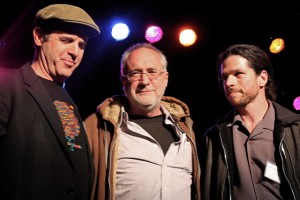


 Next week, John Gibler will be celebrating the
Next week, John Gibler will be celebrating the John Gibler is a writer based in Mexico and California, the author of Mexico Unconquered: Chronicles of Power and Revolt (City Lights Books, 2009), and a contributor to País de muertos: Crónicas contra la impunidad (Random House Mondadori, 2011). He is a correspondent for KPFA in San Francisco and has published in magazines in the United States and Mexico, including Left Turn, Z Magazine, Earth Island Journal, ColorLines, Race, Poverty, and the Environment, Fifth Estate, New Politics, In These Times, Yes! Magazine, Contralínea, and Milenio Semanal.
John Gibler is a writer based in Mexico and California, the author of Mexico Unconquered: Chronicles of Power and Revolt (City Lights Books, 2009), and a contributor to País de muertos: Crónicas contra la impunidad (Random House Mondadori, 2011). He is a correspondent for KPFA in San Francisco and has published in magazines in the United States and Mexico, including Left Turn, Z Magazine, Earth Island Journal, ColorLines, Race, Poverty, and the Environment, Fifth Estate, New Politics, In These Times, Yes! Magazine, Contralínea, and Milenio Semanal.